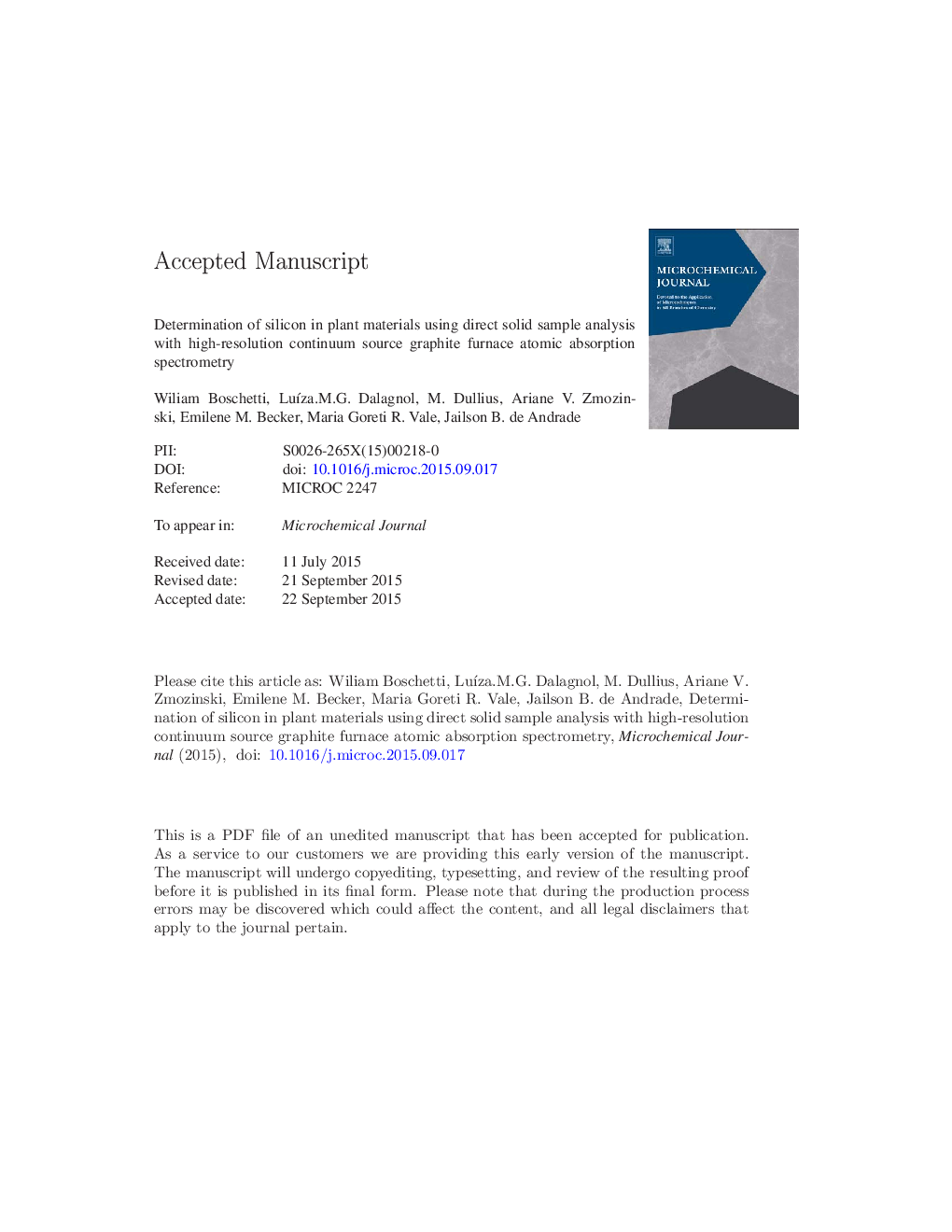| Article ID | Journal | Published Year | Pages | File Type |
|---|---|---|---|---|
| 7642271 | Microchemical Journal | 2016 | 26 Pages |
Abstract
In this work, a method for the determination of silicon in plant material by high-resolution continuum source graphite furnace atomic absorption spectrometry has been developed using direct solid sample analysis. The performance of iridium and rhodium as permanent modifiers alone and combined with the palladium-magnesium modifier in solution was investigated. According to the results, among the investigated modifiers, an improvement in sensitivity and Si signal profile was obtained using 300 μg of Rh in combination with 20 μg of Pd + 12 μg of Mg. The optimized pyrolysis and atomization temperatures were 1200 and 2650 °C, respectively. Due to the high content of Si in most of the evaluated samples, the analytical line of 221.174 nm was chosen. Moreover, an adequate working range (30 to 600 ng Si) was achieved after using a minimum gas flow in the atomization stage and the integrated absorbance of the center pixel only. The sample mass varied between 0.03 and 0.50 mg, and no spectral interferences were encountered. The limit of detection was 5 ng mgâ 1 and the limit of quantification 17 ng mgâ 1, both were calculated according to the maximum sample mass of 0.50 mg. The Si content investigated in ten plant samples varied between 0.5 and 20 μg mgâ 1. The accuracy of the method was evaluated using the certified reference materials NCS ZC73014 (Trace elements in Tea) and NCS ZC73349 (Bush Branches and Leaves) and results presented no significant difference between the certified and found concentrations. Therefore, the obtained results prove that an accurate method has been developed and it could be applied to analyze different plant materials with levels varying in a wide range, with minimum of pretreatment.
Related Topics
Physical Sciences and Engineering
Chemistry
Analytical Chemistry
Authors
Wiliam Boschetti, LuÃza M.G. Dalagnol, Mariana Dullius, Ariane V. Zmozinski, Emilene M. Becker, Maria Goreti R. Vale, Jailson B. de Andrade,
